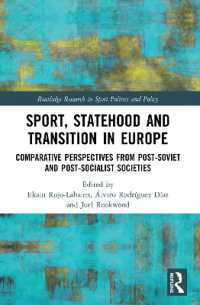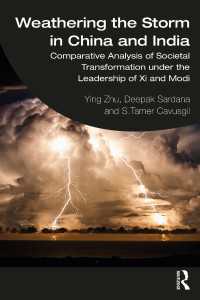- ホーム
- > 洋書
- > 英文書
- > History / World
Full Description
"Deeply researched and highly readable." —Eric Foner, Times Literary Supplement
"A rich history of regional distinctions, especially as they shaped the antebellum Republic." —Kirkus Reviews
"A fitting testament to a career marked by boundary-crossing curiosity and stalwart service to the historical profession...[a] splendid new history." —Richard Bell, Register of the Kentucky Historical Society
"Fascinating...does justice to the full sweep and complexity of American history by expertly tracing a century of change across one especially revealing patch of ground." —James H. Read, American Political Thought
"Erudite, gripping, and highly significant. Gray puts his talents as a historian of the American Revolution and the early republic to excellent use, persuasively arguing that the Mason-Dixon Line is worth seeing as a geopolitical border." —Kathleen DuVal, author of Independence Lost
Acclaimed scholar Edward Gray offers the first comprehensive history of the Mason-Dixon Line, a border at the center of early American political contestation. Formalized in 1767 to fully and finally demarcate Pennsylvania, Maryland, and Delaware, the Line resolved a longstanding jurisdictional conflict that had provoked bloodshed among colonists and ensnared Lenape and Susquehannock populations. In 1780, Pennsylvania's Act for the Gradual Abolition of Slavery inaugurated a new phase, as the Line became a boundary between free and slave states and their distinct legal regimes. Then, with the passage of the Fugitive Slave Act in 1850, the Line became a federal instrument to arrest freedom-seeking Blacks. Only with the end of the Civil War did the Line's significance fade, though it haunted the geography of Jim Crow.
Mason-Dixon tells the gripping story of colonial grandees, Native American diplomats, Quaker abolitionists, fugitives from slavery, capitalist railroad and canal builders, US presidents, Supreme Court justices, and Underground Railroad conductors—all contending with the relentless violence and political discord of a borderland that transformed American history.








